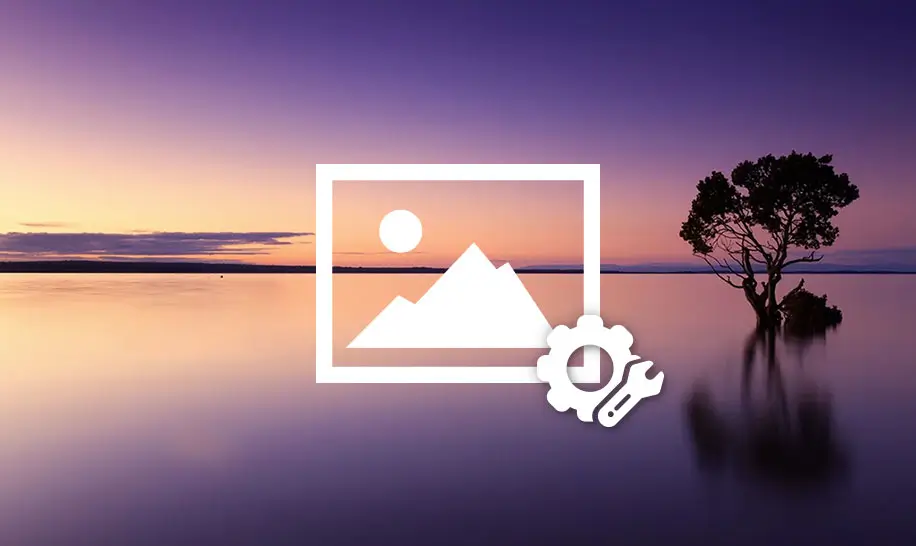
Is it really image optimization important for a website?
Images play a crucial role in website design. They help attract visitors, improve user experience, and make content more engaging. However, using high-quality images without optimization can cause issues like slow loading speed and high bandwidth usage.
Image optimization is the process of reducing the file size of images without compromising their quality. This is done by using the right file formats, compression techniques, and other optimization methods. But is it really important? Let's explore why image optimization is essential for every website.
How Image Optimization Affects Website Speed
Large Image Files Can Slow Down Your Website
One of the biggest factors affecting a website's speed is the size of its images. If images are not optimized, they take longer to load, which can frustrate visitors. Slow websites lead to a poor user experience, and users may leave before the page even fully loads.
According to studies, a delay of just one second in page load time can reduce conversions by 7%. That means if your website sells products, slow loading could directly impact your revenue.
Optimized Images Improve Performance
By reducing the file size of images, you can improve page speed significantly. Optimized images load faster while maintaining good visual quality. This results in a smoother browsing experience for visitors and keeps them engaged on your site.
Some common ways to optimize images include:
- Compressing images using tools like TinyPNG or ImageOptim.
- Using modern formats like WebP instead of JPEG or PNG.
- Resizing images to fit the required dimensions instead of using unnecessarily large files.
The Role of Image Optimization in SEO
Search Engines Prioritize Fast Websites
Google considers page speed as a ranking factor. Websites that load quickly have a better chance of ranking higher in search engine results. Since unoptimized images can slow down your site, they can negatively impact your SEO performance.
By optimizing your images, you:
- Reduce page load time, making your site more favorable to search engines.
- Improve the chances of ranking higher in Google search results.
- Enhance user engagement, leading to better on-page SEO metrics like lower bounce rates.
Optimized Images Help in Google Image Search
Apart from ranking in standard search results, optimized images can also appear in Google Image Search. Many users search for products or information through images, and having properly optimized images with descriptive alt text can bring extra traffic to your website.
Make sure to:
- Use relevant keywords in alt tags and filenames.
- Keep file sizes small to load images quickly.
- Use structured data markup to help Google understand your images better.
Better User Experience with Optimized Images
Faster Loading Means Happier Visitors
User experience is one of the most critical aspects of a successful website. A slow-loading website can drive users away, while a fast, responsive site keeps them engaged. Since images make up a large portion of a webpage's content, optimizing them ensures smooth navigation.
Mobile Users Benefit the Most
With more than 50% of website traffic coming from mobile devices, optimizing images is even more important. Mobile users often browse on slower networks, and large image files can cause extreme delays. Compressed and properly scaled images ensure a seamless experience for all users, no matter their device.
Reducing Bandwidth Usage and Hosting Costs
Large Images Consume More Server Resources
Every time a visitor loads a webpage, the browser downloads all the elements, including images. If the images are large, they consume more bandwidth and server resources.
For websites with high traffic, unoptimized images can lead to increased hosting costs and slow performance. If you are using shared hosting, excessive bandwidth usage can even result in temporary site shutdowns.
Optimized Images Save Money
By reducing image sizes, you minimize bandwidth usage, which can lower hosting expenses. This is particularly important for businesses that rely on digital marketing, as faster-loading websites also improve conversion rates.
Image Optimization for Different Website Types
E-Commerce Websites
For online stores, images are crucial because customers rely on product photos to make purchasing decisions. However, if these images are too large, they can slow down product pages, leading to lost sales. Optimizing product images ensures:
- Faster page loading times for better customer experience.
- Higher search engine rankings for product listings.
- Improved mobile shopping experience.
Blogs and Content-Based Websites
Blogs and news websites use a lot of images to make articles more engaging. Optimized images help improve readability and keep users on the site longer. Compressed images also ensure that pages load quickly, even with multiple images on a single post.
Portfolio and Photography Websites
For photographers and designers, image quality is essential. While optimization reduces file sizes, it should be done carefully to preserve high resolution. Using the right formats and moderate compression allows you to maintain quality while improving speed.
Best Practices for Image Optimization
To get the best results, follow these image optimization best practices:
- Choose the Right Format: Use JPEG for high-quality images with small file sizes, PNG for transparent backgrounds, and WebP for the best compression and quality balance.
- Resize Images: Avoid uploading images larger than necessary. Resize them to fit the website layout.
- Compress Images: Use online tools or plugins like TinyPNG, ShortPixel, or WP Smush to reduce file sizes without losing quality.
- Use Lazy Loading: Load images only when they come into the user's view, reducing initial load time.
- Add Descriptive Alt Text: Improve SEO and accessibility by providing clear descriptions of images.
- Enable Browser Caching: Store images in a visitor's browser so they don't need to be downloaded every time they visit.
Conclusion: Image Optimization Is Essential
So, is image optimization really important for a website? The answer is yes—without a doubt. Optimized images improve website speed, enhance SEO performance, provide a better user experience, and reduce bandwidth costs.
Whether you run an e-commerce store, a blog, or a professional portfolio, optimizing your images should be a priority. By following the best practices mentioned above, you can ensure that your website runs efficiently and delivers the best possible experience to your visitors.
If you haven't optimized your images yet, now is the time to start! ?



